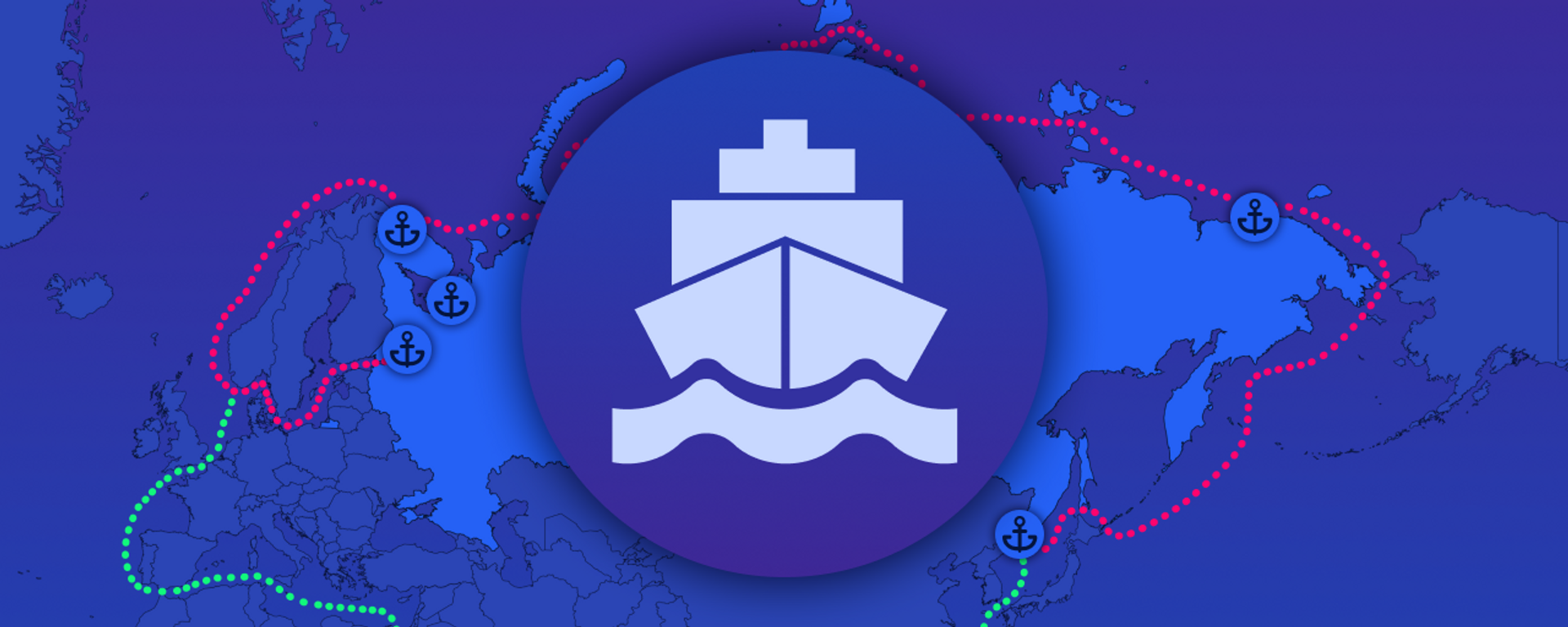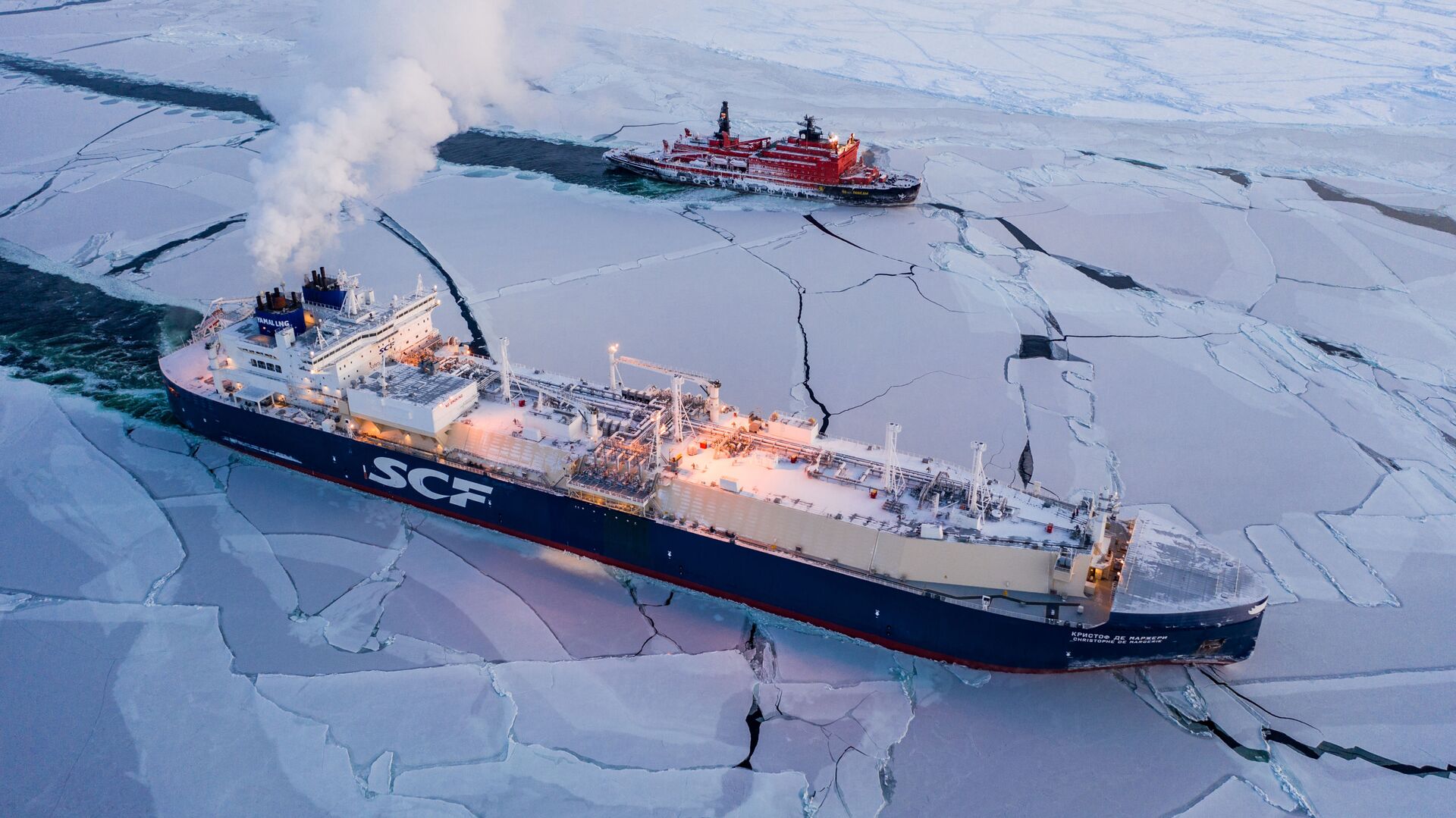https://sputnikglobe.com/20231221/cargo-traffic-via-northern-sea-route-reaches-record-35mln-tonnes-rosatom-subsidiary-1115730407.html
Cargo Traffic Via Northern Sea Route Reaches Record 35 Mln Tonnes - Rosatom Subsidiary
Cargo Traffic Via Northern Sea Route Reaches Record 35 Mln Tonnes - Rosatom Subsidiary
Sputnik International
The cargo traffic via the Northern Sea Route has reached a record 35 million tonnes since the start of 2023, which is already 1 tonne more than in the entire 2022, Russian nuclear icebreaker company Atomflot, which is part of the state-owned nuclear corporation Rosatom, said on Thursday.
2023-12-21T16:04+0000
2023-12-21T16:04+0000
2023-12-21T16:04+0000
russia
russia
northern sea route
traffic
https://cdn1.img.sputnikglobe.com/img/07e5/02/16/1082155846_0:197:3075:1926_1920x0_80_0_0_052c7a8f8bb161f7747882d724d6c629.jpg
"As of December 21, a new record of cargo transportation along the Northern Sea Route in the modern history of Russia was recorded — 35 million tonnes of cargo was transported (for comparison, in 2022, this figure totaled 34.12 million tonnes)," the statement read. The milestone delivery was made at night between December 20 to 21, when the Talnakh diesel-electric ship, belonging to Russia's Nornickel metallurgical company, transported 13,000 tonnes of cargo. The Northern Sea Route is over 3,000 nautical miles (3,452 miles) long and connects the Barents Sea and the Bering Strait, and is the shortest route between Europe and Asia, as well as the shortest sea route between the Far East and the European part of Russia. The route of cargo transportation from the Far East to Europe via the Northern Sea Route is 14,000 kilometers (8,699 miles). Russia is in the process of implementing the federal project to develop the Northern Sea Route, which provides for the creation of infrastructure to increase cargo traffic to 80 million tonnes in 2024 and 110 million tonnes by 2030, as well as increasing the total capacity of seaports to 110 million and 115 million tonnes, respectively. According to the previously approved plan for the development of the Northern Sea Route until 2035, its annual cargo traffic could reach 220 million tonnes.
https://sputnikglobe.com/20231019/northern-sea-route---key-to-global-trade-1114321168.html
russia
Sputnik International
feedback@sputniknews.com
+74956456601
MIA „Rossiya Segodnya“
2023
Sputnik International
feedback@sputniknews.com
+74956456601
MIA „Rossiya Segodnya“
News
en_EN
Sputnik International
feedback@sputniknews.com
+74956456601
MIA „Rossiya Segodnya“
Sputnik International
feedback@sputniknews.com
+74956456601
MIA „Rossiya Segodnya“
northern sea route, russia marine cargo traffic
northern sea route, russia marine cargo traffic
Cargo Traffic Via Northern Sea Route Reaches Record 35 Mln Tonnes - Rosatom Subsidiary
MURMANSK (Sputnik) - The cargo traffic via the Northern Sea Route has reached a record 35 million tonnes since the start of 2023, which is already 1 tonne more than in the entire 2022, Russian nuclear icebreaker company Atomflot, which is part of the state-owned nuclear corporation Rosatom, said on Thursday.
"As of December 21, a new record of cargo transportation along the Northern Sea Route in the modern history of Russia was recorded — 35 million tonnes of cargo was transported (for comparison, in 2022, this figure totaled 34.12 million tonnes)," the statement read.
The milestone delivery was made at night between December 20 to 21, when the Talnakh diesel-electric ship, belonging to Russia's Nornickel metallurgical company, transported 13,000 tonnes of cargo.
The Northern Sea Route is over 3,000 nautical miles (3,452 miles) long and connects the Barents Sea and the Bering Strait, and is the shortest route between Europe and Asia, as well as the shortest sea route between the Far East and the European part of Russia. The route of cargo transportation from the Far East to Europe via the Northern Sea Route is 14,000 kilometers (8,699 miles).

19 October 2023, 17:55 GMT
Russia is in the process of implementing the federal project to develop the Northern Sea Route, which provides for the creation of infrastructure to increase cargo traffic to 80 million tonnes in 2024 and 110 million tonnes by 2030, as well as increasing the total capacity of seaports to 110 million and 115 million tonnes, respectively. According to the previously approved plan for the development of the Northern Sea Route until 2035, its annual cargo traffic could reach 220 million tonnes.



